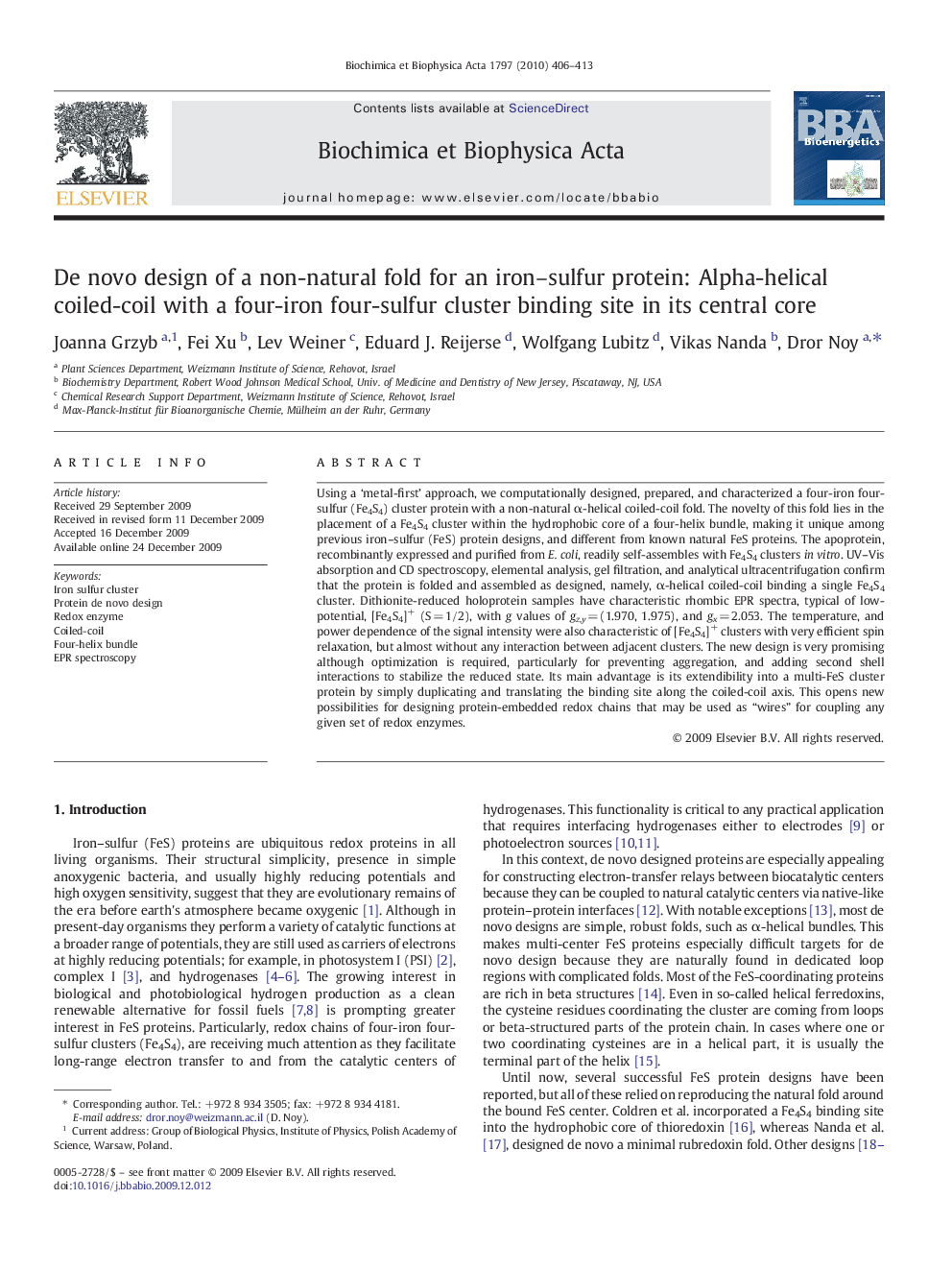| کد مقاله | کد نشریه | سال انتشار | مقاله انگلیسی | نسخه تمام متن |
|---|---|---|---|---|
| 1942901 | 1052638 | 2010 | 8 صفحه PDF | دانلود رایگان |

Using a ‘metal-first’ approach, we computationally designed, prepared, and characterized a four-iron four-sulfur (Fe4S4) cluster protein with a non-natural α-helical coiled-coil fold. The novelty of this fold lies in the placement of a Fe4S4 cluster within the hydrophobic core of a four-helix bundle, making it unique among previous iron–sulfur (FeS) protein designs, and different from known natural FeS proteins. The apoprotein, recombinantly expressed and purified from E. coli, readily self-assembles with Fe4S4 clusters in vitro. UV–Vis absorption and CD spectroscopy, elemental analysis, gel filtration, and analytical ultracentrifugation confirm that the protein is folded and assembled as designed, namely, α-helical coiled-coil binding a single Fe4S4 cluster. Dithionite-reduced holoprotein samples have characteristic rhombic EPR spectra, typical of low-potential, [Fe4S4]+ (S = 1/2), with g values of gz,y = (1.970, 1.975), and gx = 2.053. The temperature, and power dependence of the signal intensity were also characteristic of [Fe4S4]+ clusters with very efficient spin relaxation, but almost without any interaction between adjacent clusters. The new design is very promising although optimization is required, particularly for preventing aggregation, and adding second shell interactions to stabilize the reduced state. Its main advantage is its extendibility into a multi-FeS cluster protein by simply duplicating and translating the binding site along the coiled-coil axis. This opens new possibilities for designing protein-embedded redox chains that may be used as “wires” for coupling any given set of redox enzymes.
Journal: Biochimica et Biophysica Acta (BBA) - Bioenergetics - Volume 1797, Issue 3, March 2010, Pages 406–413